
INTERNATIONAL ATOMIC ENERGY AGENCY IA E A BULL E TI N The IAEA’s flagship publication | September 2023 | www.iaea.org/bulletin Innovations for 24/7 low carbon energy: The power of hybrid energy systems, pg 6 Decarbonizing industries with the help of small and micro nuclear reactors, pg 12 When nuclear waste is an asset, not a burden, pg 20 FOR NET ZERO NUCLEAR INNOVATIONS
IAEA BULLETIN is produced by the Office of Public Information and Communication (OPIC) International Atomic Energy Agency Vienna International Centre PO Box 100, 1400 Vienna, Austria Phone: (43-1) 2600-0 iaeabulletin @ iaea.org
The International Atomic Energy Agency’s mission is to help prevent the spread of nuclear weapons and to help all countries — especially in the developing world — benefit from the peaceful, safe and secure use of nuclear science and technology.

Established as an autonomous organization under the United Nations in 1957, the IAEA is the only organization within the UN system with expertise in nuclear technologies. The IAEA’s unique specialist laboratories help transfer knowledge and expertise to IAEA Member States in areas such as human health, food, water, industry and the environment.
The IAEA also serves as the global platform for strengthening nuclear security. The IAEA has established the Nuclear Security Series of international consensus guidance publications on nuclear security. The IAEA’s work also focuses on helping to minimize the risk of nuclear and other radioactive material falling into the hands of terrorists and criminals, or of nuclear facilities being subjected to malicious acts.
Managing Editor:
Joanne Liou Design & Production: Ritu Kenn
IAEA BULLETIN is available online at www.iaea.org/ bulletin
Extracts from the IAEA material contained in the IAEA Bulletin may be freely used elsewhere provided acknowledgement of their source is made. If the attribution indicates that the author is not an IAEA staff member, permission to republish other than for the use of review must be sought from the author or originating organization.
Views expressed in any signed article appearing in the IAEA Bulletin do not necessarily represent those of the International Atomic Energy Agency and the IAEA accepts no responsibility for them.
Cover: IAEA
Follow us on






The IAEA safety standards provide the fundamental principles, requirements and recommendations to ensure nuclear safety and reflect an international consensus on what constitutes a high level of safety for protecting people and the environment from the harmful effects of ionizing radiation. The IAEA safety standards have been developed for all types of nuclear facilities and activities that serve peaceful purposes, as well as for protective actions to reduce existing radiation risks.
The IAEA also verifies through its inspection system that Member States comply with their commitments under the Nuclear Non-Proliferation Treaty and other non-proliferation agreements to use nuclear material and facilities only for peaceful purposes.
The IAEA’s work is multi-faceted and engages a wide variety of partners at the national, regional and international levels. IAEA programmes and budgets are set through decisions of its policymaking bodies — the 35-member Board of Governors and the General Conference of all Member States.
The IAEA is headquartered at the Vienna International Centre. Field and liaison offices are located in Geneva, New York, Tokyo and Toronto. The IAEA operates scientific laboratories in Monaco, Seibersdorf and Vienna. In addition, the IAEA supports and provides funding to the Abdus Salam International Centre for Theoretical Physics, in Trieste, Italy.
INTERNATIONAL ATOMIC ENERGY AGENCY IA E A BULL E TI N The IAEA’s flagship publication September 2023 | www.iaea.org/bulletin Innovations for 24/7 low carbon
6 Decarbonizing industries with the
of small and micro nuclear reactors, pg 12 When nuclear waste is an asset, not a burden, pg 20 FOR NET ZERO NUCLEAR INNOVATIONS
energy: The power of hybrid energy systems, pg
help
Our innovative journey towards a net zero world
By Rafael Mariano Grossi, Director General, IAEA

As we face the mounting consequences of climate change and the imperative need for sustainable development, nuclear power is increasingly being recognized as a reliable solution for supporting our transformation to a net zero world.
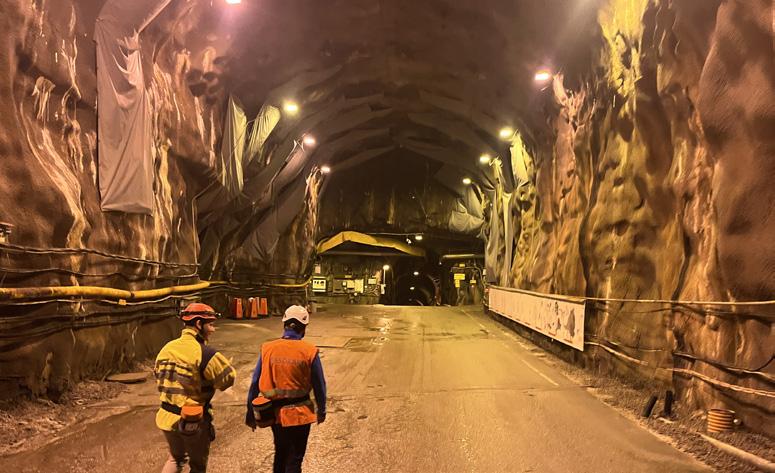
Nuclear energy capacity will need to more than double from current levels if global climate goals are to be met. However, our current energy technology will not suffice. Half of the carbon dioxide emission reductions needed to reach net zero in 2050 will have to come from technologies not yet on the market. That is why technical innovation is so important. Nuclear industry experts agree that boosting manufacturing and fuel production capacity, as well as harmonizing regulatory approaches, will be critical for the deployment of the next generation of nuclear reactors.
With the urgency of mitigating emissions and improving energy security around the world, the significance of nuclear power cannot be underestimated, and neither can the innovations that will help us realize its full potential — from novel reactor designs that exceed efficiency benchmarks to the integration of artificial intelligence into nuclear power plant life cycle solutions. Beyond electricity generation, nuclear reactors are already used for seawater desalination, and there is significant potential for further non-electric applications. This Bulletin offers an overview of these innovative developments with input from leading experts.
There is growing interest in small modular reactors (SMRs), advanced nuclear reactors that typically generate up to 300 MW(e).
SMRs look set to broaden global access to nuclear energy because they are more suitable for small electricity grids and more easily integrated with renewable energy sources. That makes them a potential solution for developing countries, many of which have shown interest in understanding the technology better. There are more than 80 SMR designs in various stages of development in 18 countries, with SMR units already deployed in China and the Russian Federation, and one design under construction in Argentina. The IAEA Platform on Small Modular Reactors and their Applications, as well as the IAEA’s Nuclear Harmonization and Standardization Initiative, play important roles in supporting the deployment of safe and secure SMRs worldwide.
At last year’s United Nations Climate Change Conference (COP27), I launched Atoms4NetZero. It provides countries and stakeholders with technical expertise and scientific evidence on nuclear energy to decarbonize electricity production, as well as hard-to-abate sectors such as industry and transport. The initiative helps to model how nuclear power can contribute to reducing net greenhouse gas emissions to zero by 2050.

It is clear: to meet global emissions targets, we need nuclear energy. Success will depend on the continued operation of many existing plants; the construction of more large traditional nuclear power plants; and the deployment of advanced reactors, including SMRs. That will require further innovation and collaboration along every point of the fuel cycle. The IAEA will continue to play its unique role in facilitating both so that nuclear can play its part in creating a thriving world that doesn’t cost us the planet.
“With the urgency of mitigating emissions and improving energy security around the world, the significance of nuclear power cannot be underestimated, and neither can the innovations that will help us realize its full potential.”
 — Rafael Mariano
— Rafael Mariano
IAEA Bulletin, September 2023 | 1 Foreword
Grossi, Director General, IAEA
Photos: IAEA
1
4
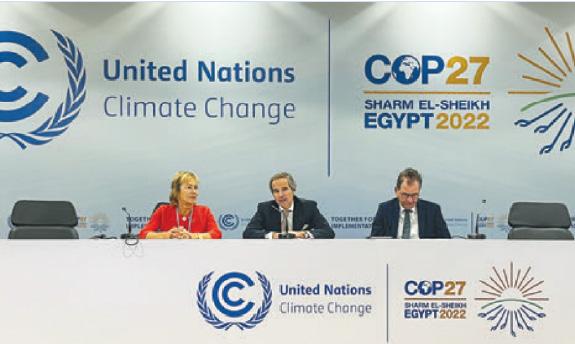
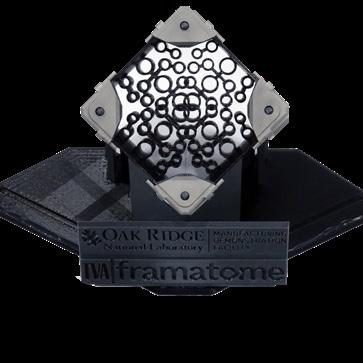

6
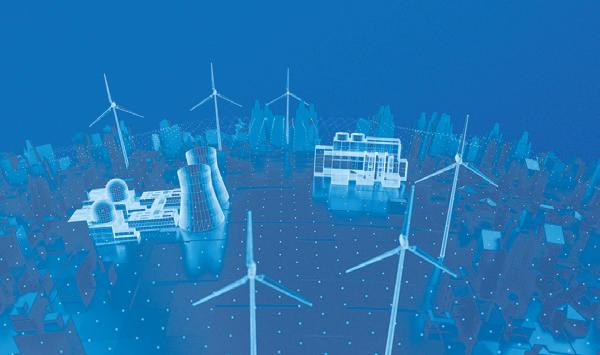
8
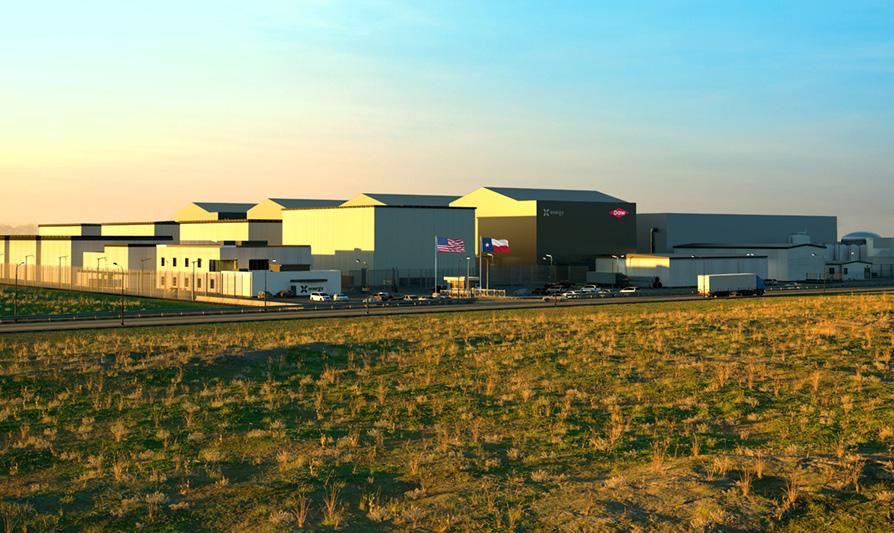

10
12
14

Contents 2 | IAEA Bulletin, September 2023
Our innovative journey towards a net zero world
What is net zero? What is the role of nuclear power and innovations?
Innovations for 24/7 low carbon energy The power of hybrid energy systems
Decarbonizing steel production with nuclear hydrogen
Harnessing nuclear power for desalination to secure freshwater resources
Decarbonizing industries with the help of small and micro nuclear reactors
Embracing the promise of additive manufacturing for advanced nuclear reactors
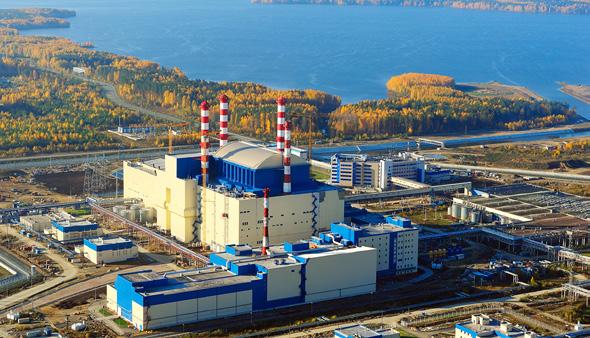

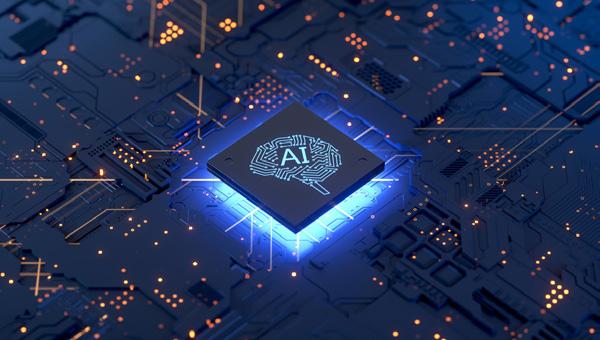

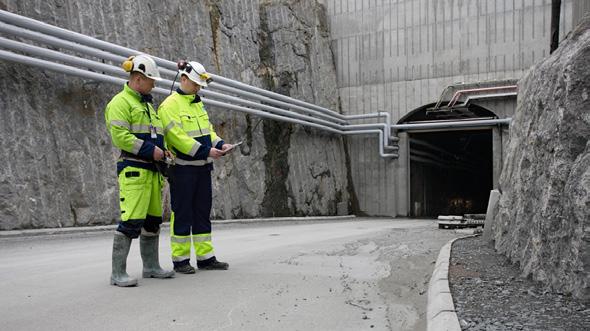

IAEA Bulletin, September 2023 | 3 Contents Q&A 28 Fashioning perceptions of nuclear energy IAEA UPDATES 30 IAEA News 32 Publications 16 Fuelling the future Building fuel supply chains for SMRs and advanced reactors 18 Enhancing nuclear power production with artificial intelligence 20 When nuclear waste is an asset, not a burden 22 Thorium’s long-term potential in nuclear energy 24 Regulating innovative reactor designs 26 Verifying spent nuclear fuel in deep geological repositories
What is net zero? What is the role of nuclear power and innovations?
 By Joanne Liou
By Joanne Liou
In the pursuit of a sustainable and climate-resilient future, achieving net zero greenhouse gas (GHG) emissions has emerged as a target around the world. Accomplishing net zero means either utilizing technologies that do not emit any GHGs — such as renewables, hydropower and nuclear power — or allowing some levels of emissions and removing an equal amount from the atmosphere through carbon capture or other technologies.
“There is consensus within the climate community that, to ensure global warming is limited to 1.5 degrees by the end of the century, the energy system, which is the main source of GHG emissions, needs to be carbon neutral. This means no emissions, or net zero,” explained Henri Paillere, Head of the Planning and Economics Studies Section at the IAEA. The 2015 Paris Agreement — an agreement adopted by 196 countries — aims to limit global warming to below 2 degrees
There is also scientific consensus that human activity is the main driver of climate change. Burning fossil fuels and clearing land and forests, including mangroves, generates GHGs such as carbon dioxide and methane, which trap heat and lead to higher temperatures. The increasing frequency of extreme weather events, rising sea levels and global temperature changes underscore the urgency to transition to a carbon-neutral society.
Nations worldwide have committed to reducing their GHG emissions to curtail their impact and address the climate crisis.
“Achieving net zero requires a multifaceted approach that includes reducing fossil fuel consumption and increasing reliance on clean energy sources,” Paillere said. Nuclear power provides 10 per cent of the world’s total electricity and one quarter of its low carbon supply, according to the World Energy Outlook 2022 published by the International
4 | IAEA Bulletin, September 2023 Nuclear Innovations for Net Zero
“Nuclear power, renowned for its low carbon footprint and reliable energy generation, emerges as a key player in the clean energy transition,” Paillere added.
An innovative path forward
Innovations in the nuclear industry will be critical for harnessing the full potential of nuclear power towards net zero goals. Novel reactor designs are entering the scene along with new modular manufacturing methods, all of which provide opportunities and challenges for deployment. The IAEA’s Nuclear Harmonization and Standardization Initiative is finding common ground among regulators, designers, operators and other stakeholders to support the safe and secure deployment of these advanced reactors, including small modular reactors.
nuclear and renewable power sources address the need for both grid flexibility and emission reduction, while optimizing financial resources. Additionally, the expanded use of nuclear power for non-electric applications, including district heating, hydrogen production, desalination and heat for industrial processes, offers options to reduce emissions.
In the quest for net zero, the IEA argues that nuclear is well positioned to help decarbonize electricity supply and that less nuclear power would make net zero ambitions more expensive and harder to achieve. To harness the power of nuclear energy in the transition to net zero, the IAEA launched the Atoms4NetZero initiative. The initiative seeks to inform policy makers and decision makers on the potential way forward for nuclear power as the reliable backbone of clean, affordable, resilient and more secure energy transitions. As of August 2023, there are 410 nuclear power reactors in operation totalling more than 368 000 MW(e) in installed capacity in 31 countries. In addition, 57 reactors are under construction in 17 countries, including 3 countries that are building their first nuclear reactors.
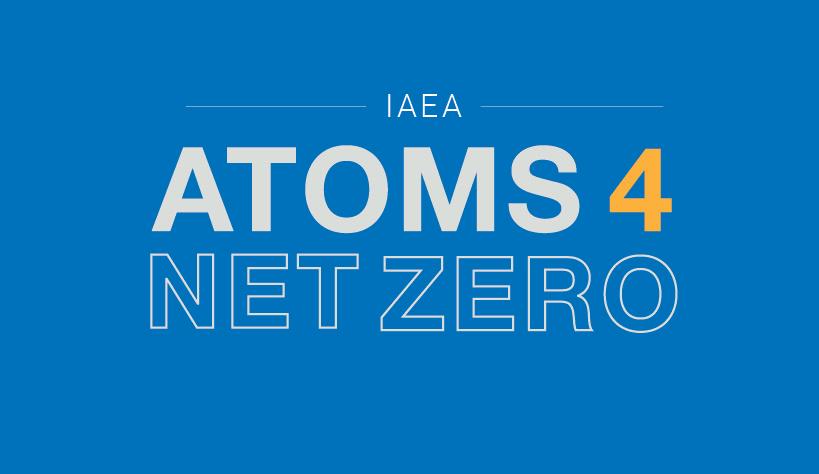
However, the prospects for nuclear power depend not only on innovations in reactor technologies but also in manufacturing processes, the security of fuel supply, spent fuel solutions and other factors. There are already examples of how innovations, such as artificial intelligence and additive manufacturing, are paving the way for safe and sustainable solutions that could support cost savings and improve the economics of operating nuclear power plants.
While wind and solar are variable energy sources that depend on the weather and time of day, nuclear power plants are dispatchable sources of energy — they can adjust their output according to electricity demand. The potential for hybrid energy systems that unite
The global shift towards nuclear power was evident last year at the 2022 IAEA General Conference. A record number of 51 countries promoted nuclear power’s role in achieving their goals for climate change mitigation, energy security and sustainable development.
“The climate crisis and the energy crisis have prompted more countries to look to nuclear power as part of the solution, with public opinion polls all over the world showing an increasing acceptance rate for it,” IAEA Director General Rafael Mariano Grossi said in his statement to the Conference. “The unique attributes of nuclear power as a safe, secure and reliable energy source are crucial to the world’s green transition.”

“Nuclear power, renowned for its low carbon footprint and reliable energy generation, emerges as a key player in the clean energy transition.”
— Henri Paillere, Head, Planning and Economics Studies Section, IAEA
IAEA Bulletin, September 2023 | 5 Nuclear Innovations for Net Zero
“Nuclear-renewable HESs offer a powerful synergy, combining the reliability and baseload capacity of nuclear power with intermittent renewable sources.”
— Tatjana Jevremovic, Team Leader, Water Reactor Technology Development, IAEA
Innovations for 24/7 low carbon energy

The power of hybrid energy systems
By Emma Midgley
The deployment of all low carbon energy sources is key to reducing emissions from the energy sector. As the share of intermittent renewable systems has increased in power grids to ensure a supply of low carbon energy 24/7, nuclear power plants are being used in hybrid energy systems (HESs) to fill in the gaps left by solar and wind electricity production.
Nuclear power is a dispatchable source of energy generation, able to adjust to changing energy demand, and it can generate enormous amounts of reliable, low carbon electricity around the clock. This stability is the reason why nuclear power has typically been used as baseload — operating continuously with little, if any, variation in output. Together with renewables, nuclear power also contributes to the stability of electricity grids by backing up the intermittent output of renewable sources. For example, some nuclear power plants in the United States of America regularly adjust capacity by around 10 to 15 per cent to reflect common variations in electricity demand and the intermittent contribution of renewables.
“Nuclear-renewable HESs offer a powerful synergy, combining the reliability and baseload capacity of nuclear power with intermittent renewable sources. This integrated approach holds the key to a resilient, low carbon energy future that can
meet growing demand while mitigating climate change,” said Tatjana Jevremovic, IAEA Team Leader for Water Reactor Technology Development.
In order to decarbonize every hour of energy consumption, all carbon-free technologies will need to be utilized. The potential of synergies among these energy resources is still to be fully exploited, and experts are investigating the strategic advantages of directly integrating these system alternatives. Nuclear–renewable HESs seek to couple nuclear and renewable energy sources by leveraging each of their benefits. The goal is to supply the grid with dependable and sustainable electricity, while simultaneously offering low carbon energy to various sectors of energy consumption.
Coupled systems
Hybrid systems incorporate multiple energy generators in two distinct ways. The first is through loosely coupled systems, which combine the output of various energy sources to enhance overall system performance and reliability. The second — yet to be realized for nuclear–renewable HESs — is through a more integrated, tightly coupled system. This type of system leverages the unique strengths of each component to achieve optimized energy production and environmental benefits.
6 | IAEA Bulletin, September 2023 Nuclear Innovations for Net Zero
“A transition towards more integrated energy systems holds the potential to ensure consistent grid demand fulfilment, regardless of whether power generation comes from nuclear, wind, hydro, solar, biomass or geothermal sources. Ideally, such systems would also incorporate energy storage solutions to effectively manage fluctuations in net power demands,” Jevremovic said. “In addition, the inclusion of carbon taxes in the economic assessment of adopting nuclear–renewable HESs could potentially render their operational costs even lower than those associated with conventional fossil fuel energy sources.”
In the future, tightly coupled HESs would be engineered to maximize synergy and optimize power generation based on realtime conditions. For example, renewable sources could be more greatly integrated with nuclear power plants to provide supplemental power during peak demand, compensating for nuclear power’s inflexibility to change output quickly. In another example, if nuclear power were to be integrated with hydroelectric systems, excess energy from nuclear reactors during off-peak hours could be used to pump water into elevated reservoirs, which could later be released to drive hydropower turbines during periods of high demand.
Nuclear–renewable HESs could also be used to manage and coordinate electricity generation in remote or off-grid locations to ensure electricity supply to critical infrastructure, such as hospitals or a transportation depot. Idaho National Laboratory recently showcased a selfcontained system called a ‘microgrid in a box’. In this scenario, a small modular reactor
would be integrated with hydro, solar or wind power to supply electricity in the event of a blackout or widespread power disruption.
Role of the IAEA
The IAEA recently launched a coordinated research project into the technical evaluation and optimization of nuclear–renewable HESs. The objective is to improve methodologies to assess the role that nuclear–renewable HESs could play in current and future energy systems, and to identify opportunities, foster international cooperation and share knowledge on the subject to help countries reach their net zero goals. Pakistan is one of the participating countries of the project. “Amid Pakistan’s energy needs and considering the global environmental challenges, the nuclear–renewable integration strategy shines,” said Haseeb ur Rehman, Principal Engineer and Assistant Professor at the Pakistan Institute of Engineering and Applied Sciences (PIEAS). “Sunlight and wind abound, while nuclear power adds a steady core. This mix trims emissions and boosts energy security.”
The IAEA has developed a platform called the Hub for On-line Nuclear Power Plant Part-Task Simulators (HOPS) in cooperation with the IAEA Collaborating Centre at the PIEAS. HOPS includes two simulators based on a nuclear–wind HES and a nuclear–solar HES. These online simulators enable users to carry out training in the operational performance of nuclear power plant systems and subsystems. The simulators and associated documentation are distributed upon request at no cost to nuclear professionals around the world.
Integrated energy systems have the potential to ensure consistent grid demand fulfilment, regardless of whether power generation comes from nuclear or renewable sources.
(Image: IAEA)

IAEA Bulletin, September 2023 | 7 Nuclear Innovations for Net Zero
“Several countries around the world are exploring and testing the use of nuclear energy to produce clean hydrogen, including for use in the production of steel.”
Decarbonizing steel production with nuclear hydrogen
By Mariia Platonova
Steel production accounts for more than 7 per cent of global carbon dioxide (CO2) emissions. That percentage is set to soar in the coming decades, along with a rising demand for steel, which is vital for sectors ranging from energy and transport to construction and consumer appliances. However, nuclear energy could help put steel production on a path to net zero.
About two billion tonnes of steel are produced annually around the world. According to the International Energy Agency, steel demand is projected to rise by more than a third by 2050, mainly in developing countries. A growing number of global companies are looking for ways to decarbonize the energyintensive industrial processes of this sector.
The steel industry largely depends on coking coal to power blast furnaces, which turn iron ore into steel, a process that emits large quantities of CO2. However, it is possible to create steel using a method called direct reduction of iron, in which hydrogen reacts with iron ore without melting and emits water vapour and no CO2.
“The amount of hydrogen needed to create green steel is staggering. Traditionally, fossil fuels have been used to generate almost all hydrogen, therefore finding the necessary amount of decarbonized hydrogen is going to be one of the biggest challenges,” said Francesco Ganda, Technical Lead for Non-Electric Applications at the IAEA. “Nuclear hydrogen production, with zero emissions, can really be a game changer for the sector, as nuclear power has the potential to provide sufficient heat and electricity 24/7 to produce the required amount of hydrogen. This could help to make huge strides in the clean energy transition.”
Nuclear power reactors coupled with a hydrogen production plant can efficiently produce both energy and hydrogen as a
cogeneration system, fitted with components for either electrolysis or thermochemical processes. Electrolysis is the process of inducing water molecules to split using a direct electric current, producing both hydrogen and oxygen.
Water electrolysis operates at relatively low temperatures of less than 100 degrees Celsius, while steam electrolysis operates at much higher temperatures of around 700 degrees to 800 degrees Celsius and requires less electricity than water electrolysis. Water electrolysis is a process whereby electricity is used to separate the hydrogen from the oxygen in water. This type of technology has been commercially available for decades. High temperature electrolysis follows the same principle but uses water in the form of steam, thereby reducing the amount of electricity required.
Advances in electrolyser technologies are making hydrogen production from conventional nuclear power reactors more efficient and cheaper. At least one nuclear power plant in the United States of America — Prairie Island in Minnesota — is installing a high temperature electrolyser and is using heat from the reactor to lower the electricity use and, therefore, the cost of nuclear hydrogen production.
“The high-temperature process of solid oxide electrolysers can take advantage of heat energy from a nuclear power plant in the form of steam, giving the electrolyser an incredibly high efficiency rate,” said Akhil Batheja, Director of Hydrogen Business Development at Bloom Energy, a company that produces solid oxide fuel cells for energy generation. “Since electricity costs represent the majority of costs involved in electrolysed hydrogen, this presents the best economic value proposition for a nuclear power plant and for creating low carbon hydrogen.”
— Aline des Cloizeaux, Director, Division of Nuclear Power, IAEA
8 | IAEA Bulletin, September 2023 Nuclear Innovations for Net Zero
Role of the IAEA
The IAEA helps countries by supporting research into existing nuclear capacity usage for hydrogen production, including through coordinated research projects. To help countries in evaluating, planning and strategizing the development of nuclear hydrogen projects, the IAEA also organizes technical meetings and has developed the Hydrogen Economic Evaluation Programme, a tool to assess the techno-economic viability of large-scale hydrogen production using nuclear energy. Additionally, in 2022, the IAEA launched an initiative to develop a road map for the commercial deployment of hydrogen production using nuclear energy
and released an e-learning course on hydrogen production through nuclear cogeneration.
“Several countries around the world are exploring and testing the use of nuclear energy to produce clean hydrogen, including for use in the production of steel,” said Aline des Cloizeaux, Director of the IAEA Division of Nuclear Power. “With the advent of new and more efficient electrolyser technology, and with the deployment of advanced reactor technologies, such as high temperature reactors, on the horizon, nuclear energy is well placed to provide a key contribution to clean hydrogen production and the decarbonization of steel production and other industries.”
Using low carbon nuclear power to produce hydrogen could have an impact on the decarbonization of the steel industry.
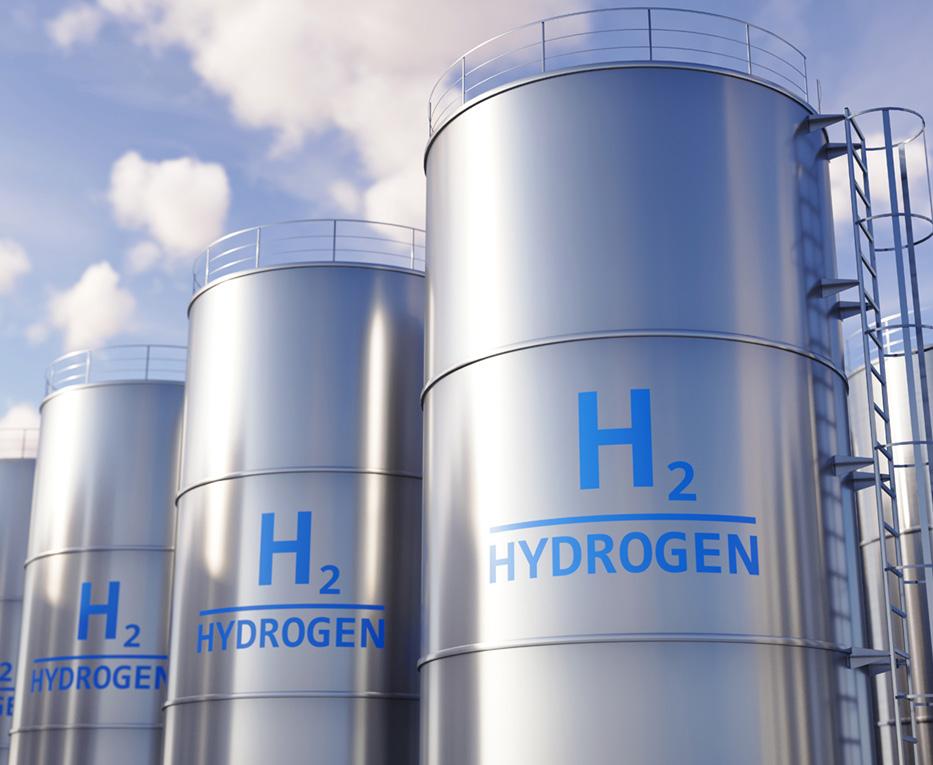
IAEA Bulletin, September 2023 | 9 Nuclear Innovations for Net Zero
(Photo: Adobe Stock)
Nuclear desalination plants, such as the one pictured here at the Karachi Nuclear Power Complex in Pakistan, have been demonstrated as a viable option to meet the growing demand for potable water.
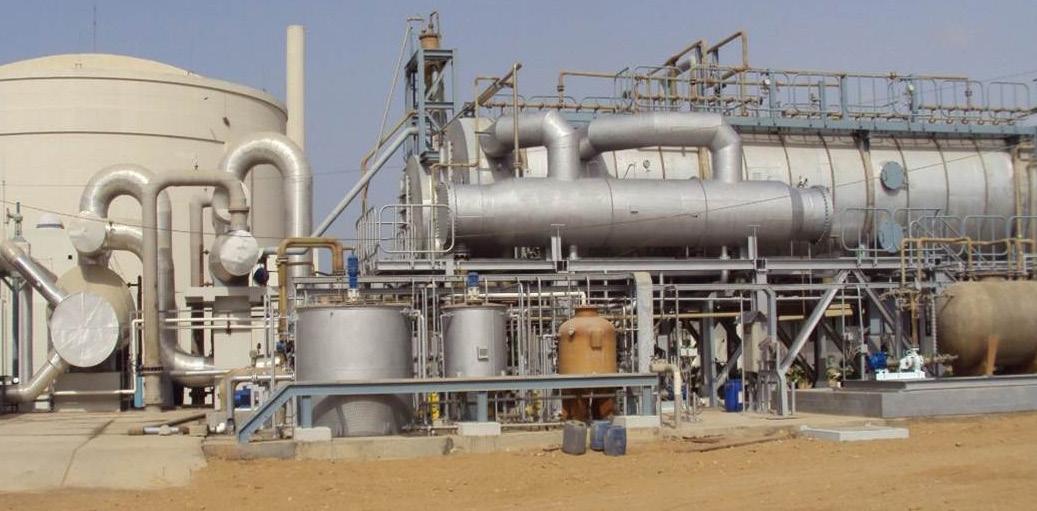
Harnessing nuclear power for desalination to secure freshwater resources
By Omar Yusuf
Water sits at the centre of the climate crisis. Rising sea levels, increasingly frequent flooding and droughts, and declining glacial and snow cover are all projected to frustrate access to sources of potable water. Without solutions to mitigate these and other effects of climate change, water scarcity will increasingly pose a threat to quality of life on a global scale. The demand for fresh water for drinking and industrial use is not limited to landlocked countries, but also affects small island developing states and countries with large coastal territories.
Nuclear power plants could offer a solution, while serving a dual purpose: producing low carbon electricity and turning seawater into fresh water. “The non-electric applications powered by nuclear energy, such as desalination, present sustainable solutions for a number of water-intensive endeavours — from the consumption needs of millions of households and the industrial applications of fresh water to agriculture and livestock rearing — that current and future generations will face,” said Francesco Ganda, Technical Lead for Non-Electric Applications at the IAEA.
For nearly 30 years, the IAEA has supported countries’ efforts to improve supply, quality and access to clean water through nuclear
desalination, a process that uses the heat and electricity produced by a nuclear power plant to remove salt and minerals from seawater through distillation or membrane separation, mostly reverse osmosis. Desalination using nuclear power is less carbon intensive and is cost competitive with alternative methods, such as fossil fuel-based techniques. India, Japan and Kazakhstan have the most experience in nuclear desalination, with hundreds of reactor-years of successful operations. This solution provides a viable, cost-effective path to potable water for thousands of communities. “Nuclear power plants could help meet the growing demand for potable water and provide hope to areas with acute water shortages in many arid and semi-arid zones,” Ganda added.
In 1996, the IAEA established its first advisory group on nuclear desalination, which helped to stimulate discussion on nuclear desalination activities and provided a forum for countries to exchange their experiences in the application of nuclear power plants to desalinate water. Global interest in seawater desalination using nuclear energy has grown ever since.
“More countries are seriously considering desalination powered by nuclear energy to
10 | IAEA Bulletin, September 2023 Nuclear Innovations for Net Zero
(Photo: Pakistan Atomic Energy Commission)
address their water needs, while avoiding carbon emissions,” Ganda said. “As desalination is a very energy intensive technology, it is imperative to power it with large-scale, zero-carbon sources, such as nuclear energy, in order to continue providing essential access to clean water to an increasing number of people worldwide, while simultaneously addressing climate change and commitments to net zero. The IAEA is at the forefront of efforts to support countries in achieving these goals.”
To foster and accelerate action in this scientific domain, the IAEA has developed and launched two software programs: the Desalination Economic Evaluation Program and the Desalination Thermodynamic Optimization Program. Both are designed to allow experts to conduct economic, thermodynamic and optimization analyses of different power sources when coupled with various desalination procedures.
Realizing the potential of desalination
In 2022, through its technical cooperation programme, the IAEA hosted a national training course in Amman, Jordan, to build capacity in the use of small modular reactors (SMRs) to desalinate water. Through the IAEA Platform on Small Modular Reactors and their Applications, the Jordan Atomic Energy Commission (JAEC) requested a review by IAEA nuclear power experts of a nuclear desalination study that employs SMRs.
“Desalination is considered the primary source of fresh water in Jordan to fulfil the
expected demand and reduce the supplydemand deficit,” said Khalid Khasawneh, Commissioner for Nuclear Power Reactors at the JAEC. The study found that using nuclear energy for desalination is feasible in Jordan, and Khasawneh added that “it offers competitive prices for fresh water to end consumers, in comparison with imported energy sources.”
The IAEA will host an interregional training course in Moscow in October 2023 to explore design considerations for cogeneration projects using SMRs and microreactors, where electrical power or heat generation is used to fuel the desalination process.
A series of technical publications designed to introduce experts to the design, economics and safety of seawater desalination using nuclear power complements the analysis software, the IAEA Toolkit on Nuclear Desalination and the training provided by the IAEA. In an effort to drive innovation in this field, the IAEA has also completed a number of coordinated research projects related to desalination.
The IAEA is continuing to organize efforts towards improving how existing and future nuclear reactors can contribute to enhancing access to clean water through decarbonized desalination technologies that use nuclear power. Last year, the IAEA launched a new research project to assess various nuclear cogeneration applications, including nuclear desalination, and to explore why and how countries could consider nuclear cogeneration in their portfolio of options to address the climate challenge.
“As desalination is a very energy intensive technology, it is imperative to power it with large-scale, zero-carbon sources, such as nuclear energy, in order to continue providing essential access to clean water to an increasing number of people worldwide, while simultaneously addressing climate change and commitments to net zero.”
— Francesco Ganda, Technical Lead, Non-Electric Applications, IAEA
IAEA Bulletin, September 2023 | 11 Nuclear Innovations for Net Zero
“Companies with refining processes and drilling operations need nuclear. These are very carbon intensive processes, and in 30 per cent of cases, the electricity grid cannot reach the areas where extraction or refining are carried out.”
— Chirayu Batra, Chief Technology Officer, Terra Praxis
Decarbonizing industries with the help of small and micro nuclear reactors
 By Emma Midgley
By Emma Midgley
From cement and shipping to oil and gas and steel production, industries are examining and shifting practices to reduce emissions and transition their operations to net zero. New nuclear energy solutions are emerging as a key option.
Upstream operations, such as extracting gas and oil through drilling, pumping and fracking, require massive amounts of energy, currently generated from fossil fuels. Downstream operations, such as refining and processing these materials for use as fuel, or for use in products such as pharmaceuticals or fertilizers, also require heat and electricity that are largely generated from fossil fuels.
“Most oil and gas operations burn fossil fuels to produce the energy needed for their upstream and downstream operations,” said Aline des Cloizeaux, Director of the IAEA’s Division of Nuclear Power. “To drive down carbon emissions from these processes, ideally drilling, natural gas liquefaction and refining would be electrified with low carbon sources, such as nuclear.”
Many oil and gas, drilling, and extraction operations take place in remote locations, and in many cases, it is not possible for these processes to be fuelled by electricity from the grid. It is here that microreactors (MRs) or
small modular reactors (SMRs) could provide a low carbon alternative.
“Companies with refining processes and drilling operations need nuclear. These are very carbon intensive processes, and in 30 per cent of cases, the electricity grid cannot reach the areas where extraction or refining are carried out,” said Chirayu Batra, Chief Technology Officer of Terra Praxis, a non-profit focused on decarbonization solutions for hard-to-abate sectors, including coal, industrial heat and heavy transport. “Burning diesel and gas to produce the energy required for these operations is a business loss for the industry and means greater carbon emissions. There is a way for these processes to be electrified through a remote, reliable and carbon-free source. MRs could be used in most locations, even offshore if you place them on ships or floating platforms.”
Efficient and clean operations
While SMRs and MRs have potential for deployment in remote locations, SMRs may also have important uses in industries such as manufacturing plastics or other forms of industrial processing using heat. Current nuclear power reactors generate large amounts of heat, but around 60 to 70 per cent of this heat is released to the environment
12 | IAEA Bulletin, September 2023 Nuclear Innovations for Net Zero
due to the steam to electricity conversion efficiency.
One way to use nuclear power more efficiently, while driving down carbon emissions, is to use the heat generated by nuclear reactors in industrial or chemical processes. The US Department of Energy’s Advanced Reactor Demonstration Program is supporting the development of a high temperature gas cooled SMR for deployment at a manufacturing complex for consumer products.
The chemical company Dow Inc. plans to replace gas-fired combustion and steam engines with an SMR as part of Dow’s commitment to reduce carbon emissions by 30 per cent by 2030. Dow’s goal is to achieve carbon neutrality by 2050.
A high temperature nuclear reactor, capable of producing heat at 750 degrees Celsius is particularly suitable as a low carbon method to produce olefins, chemical compounds which can be used as starting materials for plastics, detergents and adhesives. Dow’s proposed SMR will be located at an existing manufacturing site in Seadrift, Texas, and is expected to reduce emissions at the site by around 440 000 tonnes of carbon dioxide per year. The SMR will be used to provide
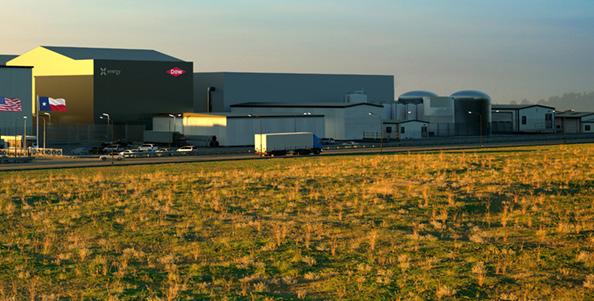
process heat to make products such as polyethylene, used in packaging, paints and foams.
Construction of the four-reactor project is expected to begin in 2026 and be completed by the end of the decade. The project “will enable Dow to take a major step in reducing our carbon emissions, while delivering lower carbon footprint products to our customers and society,” stated Jim Fitterling, Dow Chairman and CEO. The initiative “will serve as a leading example of how the industrial sector can safely, effectively and affordably decarbonize,” he added.
The IAEA helps to coordinate the efforts of countries around the world to develop SMRs and MRs by bringing together experts, governments and regulatory bodies to enhance the safe and secure deployment of this new technology. The IAEA launched its Nuclear Harmonization and Standardization Initiative (NHSI) in June 2022 and the Platform on Small Modular Reactors and their Applications (SMR Platform) in 2021. The NHSI aims to advance the harmonization and standardization of SMR design, construction, regulatory and industrial approaches, while the SMR Platform supports all aspects of SMR development, deployment, licensing and oversight.
The United States Department of Energy is supporting the development of a small modular reactor for deployment at a manufacturing complex for consumer products in Texas.
IAEA Bulletin, September 2023 | 13 Nuclear Innovations for Net Zero
(Image: Dow and X-energy)
“In the future, the nuclear industry may make extensive use of 3D printing and other advanced manufacturing techniques, just as the aeronautical and automotive industries are already doing.”
— Aninda Dutta Ray, Nuclear Engineer, IAEA
Embracing the promise of additive manufacturing for advanced nuclear reactors
By Lucy Ashton
Imagine printing a nuclear reactor core — or nuclear fuel pellets — in 3D. It may sound far-fetched that 3D printing could create materials robust enough to withstand the extreme environment of a nuclear reactor, yet that is what many experts believe is necessary to accelerate the deployment of advanced reactors and maximize nuclear energy’s contribution to tackling climate change.
Already used in some industries, 3D printing is a form of additive manufacturing and involves a process that prints objects by building up material, layer by layer. This is in contrast to subtractive manufacturing, which cuts or burns away surplus material. 3D printing works directly from a digital drawing and is controlled by a computer, producing intricate shapes that were previously difficult or impossible to make. This method of manufacturing is faster, creates less waste, reduces the potential for error and often allows designers to reduce the weight of objects — all attributes that could significantly reduce manufacturing costs.
“In the future, the nuclear industry may make extensive use of 3D printing and other advanced manufacturing techniques, just as the aeronautical and automotive industries are already doing,” said Aninda Dutta Ray, a nuclear engineer working on advanced manufacturing at the IAEA. “The potential is certainly there. The first steps are well underway with intense research and reviews against existing nuclear design codes and standards being undertaken, while some regulators have even started drafting guidance for their licensees.”
Introducing and testing 3D prints
As with most new manufacturing processes, the first steps are small, slow and cautious. The nuclear industry has seen some first-use cases, such as a 3D-printed pump impeller installed at a Slovenian reactor in 2017. The fan or turbine-like component drives water
through the pump. It was 3D printed because the original drawings for the component were not available.
In the United States of America, Oak Ridge National Laboratory (ORNL) is developing 3D printing technologies for the nuclear field and other industries. In a first-of-akind test, ORNL printed brackets called channel fasteners. The pieces were installed in a nuclear power reactor in 2021 and will remain there until 2027, before being extracted and inspected to evaluate their performance under the reactor conditions. The French multinational company Framatome installed the first 3D-printed, stainless steel fuel component at the Forsmark nuclear power plant in Sweden in 2022. In addition, the Russian Federation recently built a 3D printer capable of printing objects with a diameter of up to 2.2 metres and a height of 1 metre, while in the Republic of Korea, 3D printing is being used to manufacture items such as control valve components.
As 3D printing was not invented with the nuclear industry in mind, the manufacturing techniques are being adapted to the industry’s needs. While industrial standards organizations are creating standards for 3D printing in other industries, those for nuclear are still under development.
According to Dutta Ray, figuring out the best testing methods, standardizing them around the world and gaining approval from regulators is arguably more challenging than the actual innovation and perfection of the manufacturing techniques themselves. In Europe, the NUCOBAM (NUclear COmponents Based on Additive Manufacturing) project, which brings together a group of 13 organizations in 6 European countries, is conducting research to develop the qualification and evaluation process that would allow 3D printing to be used in nuclear power plants.
14 | IAEA Bulletin, September 2023 Nuclear Innovations for Net Zero
The Electric Power Research Institute (EPRI) is also working alongside the US Department of Energy and manufacturers to carry out research in order to streamline the regulatory acceptance of new technologies, such as 3D printing. That research is focused on investigating the applicability of advanced manufacturing technologies, developing codes and standards, and supporting regulatory reviews with independent test results for material performance against environmental degradation. “The demand for alternative supply chains and accelerated deployment is increasing markedly as the energy industry continues to transition to advanced energy systems such as advanced reactors,” said Marc Albert, EPRI’s Principal Team Lead for advanced manufacturing projects. “Additive manufacturing and other advanced manufacturing methods are enablers to accelerate the deployment of the clean technologies.”

Role of the IAEA
One of the roles of the IAEA is to foster international cooperation and knowledge sharing. In April 2023, the IAEA launched the International Network on Innovation to Support Operating Nuclear Power Plants
(ISOP). ISOP is an inclusive network and serves as a platform for countries to collaborate on a range of innovation topics, including advanced manufacturing techniques such as 3D printing.
In June 2022, the IAEA also launched its Nuclear Harmonization and Standardization Initiative (NHSI), which focuses on facilitating the deployment of safe and secure advanced nuclear reactors and small modular reactors. The NHSI aims to harmonize regulatory approaches and to develop more standardized industrial approaches, including common approaches to nuclear codes and standards applicable to additive manufacturing for SMRs.
“Collaborative innovation is the key to getting the next generation of nuclear technology safely out of the lab and into the world as soon as we can to help with net zero goals,” said Ed Bradley, Team Leader for Nuclear Power Plant Operation and Engineering Support at the IAEA. “Sharing findings, techniques and knowledge saves time and resources by eliminating the need for every nuclear nation to complete the same test or spend money to overcome the same sticking points. That is how we are going to succeed.”
These fuel assembly brackets, manufactured by Oak Ridge National Laboratory (ORNL) in partnership with Framatome and Tennessee Valley Authority, are the first 3D-printed, safety-related components to be inserted into a nuclear power plant.
IAEA Bulletin, September 2023 | 15 Nuclear Innovations for Net Zero
(Photo: F. List/ORNL, US Department of Energy)
Fuelling the future
Building fuel supply chains for SMRs and advanced reactors
By Lucy Ashton
Engineers are preparing for the next generation of nuclear power reactors, aimed at improving energy security and mitigating climate change. Many advanced reactor designs, including small modular reactors (SMRs), will require high assay low enriched uranium (HALEU) fuel, which ranges from 5 to 20 per cent of uranium-235 — beyond the 5 per cent level that powers most nuclear power plants in operation.
“HALEU fuel will enable smaller designs, longer operating cycles and increased efficiencies,” said Olena Mykolaichuk, Director of the Division of Nuclear Fuel Cycle and Waste Technology at the IAEA. “However, in order to reap the full benefits of HALEU fuel, some countries are boosting production capacity to ensure that sufficient supply is available, which will be critical for SMR deployment.”
HALEU is produced in the Russian Federation and the United States of America, mostly for use in research reactors and for possible use in operating light water reactors. The facility in Russia is currently the only one that manufactures HALEU on a commercial scale.
Last year, the Euratom Supply Agency produced a report on the future fuel supply for Europe’s HALEU-converted, or soon to be converted, research reactors. Traditionally, Europe’s research reactors have been fuelled by high enriched uranium. HALEU-converted research reactors are currently supplied with fuel from Russia and the USA, and the latter says that it can only guarantee this supply until 2035 or 2040, due to the current lack of HALEU production capabilities, which increases the risk of supply shortage for the research reactors to be converted in the future.
The Euratom Supply Agency estimates that, by 2035, the European Union will need
between 700 kilograms and a ton of HALEU each year to keep its research reactors in operation. This estimate does not include any future demand from advanced reactors used for power generation. Euratom therefore recommends that the EU develop its own capacity to produce HALEU fuel, due to concerns over the future security of supplies.
While HALEU production is not yet on the horizon in Europe, the continent’s largest nuclear fuel producers are world leaders in enrichment technology. These producers currently enrich uranium up to 6 per cent and, according to the Euratom Supply Agency’s report, could use the same technology to produce HALEU without major technical challenges.
However, the licensing, building, securing and operation of such facilities requires significant investment, and European producers say they still need to see the business case for that investment. European companies could start producing HALEU in as little as five years and plans for the expansion of an existing French plant, plus the construction of new facilities in the United Kingdom and the USA are under consideration.
Nevertheless, the US nuclear industry is warning that the deployment of some SMR designs may be delayed by years due to the lack of HALEU. Currently, nine out of ten advanced reactor designs funded by the US Government will need HALEU fuel in the next decade. Projections by the US Department of Energy (DOE) suggest that more than 40 000 kilograms of HALEU will be needed by 2030, with that amount set to grow year after year as the new fleet of advanced reactors is put into operation.
Working to address this need, the US DOE is investing in the domestic HALEU production
“The next generation of nuclear technologies will require new supply chains for new kinds of fuel.”
— Ki Seob Sim, Nuclear Fuel Engineering Specialist, IAEA
16 | IAEA Bulletin, September 2023 Nuclear Innovations for Net Zero
line. It has set up a HALEU Consortium and has co-funded a demonstration production plant in Piketon, Ohio. In June 2023, the US regulator cleared the Piketon facility to begin enrichment operations.
Piketon’s HALEU centrifuge cascade is expected to produce 20 kilograms of HALEU by the end of 2023 and 900 kilograms in 2024. A full-scale HALEU cascade of 120 individual centrifuge machines has a combined capacity of approximately 6000 kilograms of HALEU per year.

To complement this, another type of HALEU fuel is beginning to be produced for use by down-blending government stockpiles of high enriched uranium. Tristructural isotropic (TRISO) particle fuel is made of uranium, carbon and oxygen covered in three layers of carbon- and ceramic-based materials that
prevent the release of radioactive fission products. These particles can then be shaped into either billiard ball sized spheres called pebbles or cylindrical pellets. TRISOHALEU fuel is used in high temperature gas cooled reactors, and some vendors are planning to use TRISO-HALEU fuel for their SMR and microreactor designs.
“The next generation of nuclear technologies will require new supply chains for new kinds of fuel,” said Ki Seob Sim, Nuclear Fuel Engineering Specialist at the IAEA. “Efforts are now underway to build out those supply chains, but a lot more remains to be done, including demonstrating a clear business case for these advanced reactors in many regions, if we are to ensure the necessary supply of HALEU fuel. However, I’m confident that we can do that.”
The United States Department of Energy has invested in the domestic production of high assay low enriched uranium (HALEU) fuel. The HALEU demonstration programme based in Piketon, Ohio, is expected to produce 20 kilograms of HALEU by the end of 2023.
IAEA Bulletin, September 2023 | 17 Nuclear Innovations for Net Zero
(Photo: Centrus Energy Corporation)
“AI, together with other technologies, like digital twins, could decisively boost the efficiency of nuclear power production.”
— Nelly
Enhancing nuclear power production with artificial intelligence
 By Wolfgang Picot
By Wolfgang Picot
Artificial intelligence (AI) holds promising potential for advancing nuclear energy production. These sophisticated computer systems mimic human logic in problem solving and decision making. With its capability to enhance efficiency, automation, safety and predictive maintenance, as well as to optimize processes, AI is already making strides in some areas of the nuclear field.
AI is an umbrella term, encompassing various technologies developed over decades. It ranges from simple computer programs, such as spam filters, to more advanced concepts like machine learning, where computers learn from past experiences through extensive training using large amounts of data. With the advent of highly potent microchips, deep learning, which involves artificial neural networks modelled after the human brain, emerged.
Generative AI, a subset of deep learning, has captivated the public’s attention by crafting original texts, images and videos. It is highly versatile and can be adapted to many different functions or activities. “There is legitimate excitement about what generative tools can do,” said Jeremy Renshaw, an expert on technology innovation at the Electric Power
models are very powerful, and there is currently a lot of effort to develop new and better tools.”
While generative AI can help with administrative tasks, as in other industries, its use in operating nuclear power plants (NPPs) is not yet possible due to its novelty and opaqueness; it is not yet entirely understood how artificial networks function and come to conclusions. More transparent systems called explainable generative AI hold promise for broader use in NPP operations. Developments towards such AI are underway, and Renshaw is confident that, when realized, it will allow for the use of AI in NPPs in the foreseeable future.
Machine learning applications
Machine learning has been applied in the nuclear industry for some time and has proven useful in various areas. Operators leverage machine learning algorithms for real-time monitoring and predictive maintenance. The software efficiently identifies anomalies by sifting through copious sensor data, allowing human analysts to focus on potential irregularities. “The inspector only looks at pertinent data. Instead of searching for the ‘needle in the haystack’,
Ngoy Kubelwa, Nuclear Engineer, IAEA
18 | IAEA Bulletin, September 2023 Nuclear Innovations for Net Zero
This technology does not replace human analysis. However, it can deliver faster, more accurate results while relying on less, yet still indispensable, human interaction. Machine learning is already being applied to screen for cracks in metal tanks and pipes in NPPs. Enhanced precision, reduced cost and optimized human oversight from machine learning has the potential to deliver significant benefits to the nuclear power sector.
AI’s potential applications for NPPs are vast. It could, for example, bolster efficiency and ensure a steady electricity supply by adjusting power generation based on real-time data, such as consumer demand, weather and equipment performance. Automation using robotics and AI systems could handle routine tasks, focusing human intervention on high value tasks and enhancing plant efficiency. It could also optimize fuel consumption and maximize the energy output of reactors.
“AI, together with other technologies, like digital twins, could decisively boost the efficiency of nuclear power production,” said Nelly Ngoy Kubelwa, a nuclear engineer specializing in innovative technology at the IAEA. A digital twin is a digital representation of a physical object, person or process, and it can simulate real situations and their outcomes.
According to Ngoy Kubelwa, there is tremendous interest in AI solutions in the industry, but before any new technology can be used in NPPs, regulators need to know and understand it thoroughly to develop guidelines

“There is a lot of discussion around whether AI, and especially generative AI, is something so fundamentally novel that we need an entirely new approach to regulate it or whether we can adapt current standards,” Ngoy Kubelwa said. “For the deployment of this technology, we need to develop frameworks in collaboration with the regulators.”
The IAEA has supported AI’s potential application in NPPs since 2021, producing a report on AI and subsequently establishing working groups under the International Network on Innovation to Support Operating Nuclear Power Plants (ISOP) that focus on the regulatory and technical aspects of AI deployment. Forthcoming publications on AI applications for the nuclear industry and on the safety implications of AI in NPPs further underline this commitment. The IAEA is also leading a coordinated research project to explore how AI and innovative technology can help to expedite the deployment of small modular reactors, and the establishment of IAEA Collaborating Centres focused on AI is under consideration.
For Ngoy Kubelwa, the topic is not merely technical. “The use of AI and other emerging technologies will signal that the nuclear industry has the pulse for the latest development,” she said. “Proactively engaging in this sphere will play an important part in captivating the interest of the younger generation, which is vital for securing the future of nuclear energy production.”
The IAEA is leading a coordinated research project to explore how artificial intelligence can help the deployment of small modular reactors.
(Image: Adobe Stock)
IAEA Bulletin, September 2023 | 19 Nuclear Innovations for Net Zero
When nuclear waste is an asset, not a burden
By Lucy Ashton
What if the high level nuclear waste generated by nuclear power plants could fuel a circular economy in the energy sector? Fast neutron reactors operating in a closed fuel cycle could make that happen.
Fast neutron reactors, which use neutrons that are not slowed by a moderator such as water to sustain the fission chain reaction, offer advantages over existing thermal nuclear reactors. When operated in a fully closed fuel cycle, in which nuclear fuel is recycled and reused, fast reactors have the potential to extract 60 to 70 times more energy from the same amount of natural uranium than thermal reactors, thereby significantly reducing the amount of high level radioactive waste.
“When using fast reactors in a closed fuel cycle, one kilogram of nuclear waste can be recycled multiple times until all the uranium is used and the actinides — which remain radioactive for thousands of years — are burned up. What then remains is about 30 grams of waste that will be radioactive for 200 to 300 years,” said Mikhail Chudakov, IAEA Deputy Director General and Head of the Department of Nuclear Energy.
Fast reactors were among the first technologies deployed during the early days of nuclear power, when uranium resources were perceived to be scarce. However, as technical and material challenges hampered development and new uranium deposits were identified, light water reactors became the industry standard. However, efforts are underway in several countries to advance fast reactor technology, including in the form of small modular reactors (SMRs) and microreactors (MRs).
Five fast reactors are now in operation: two operating reactors (BN-600 and BN-800) and one test reactor (BOR-60) in the Russian Federation, the Fast Breeder Test Reactor in India and the China Experimental Fast Reactor. The European Union, Japan, the United States of America, the United Kingdom and others have fast reactor projects tailored to a variety of aims and functions underway, including SMRs and MRs.
For some countries, operating fast reactors in a fully closed fuel cycle is seen as the pathway to ensuring the long-term sustainability of nuclear energy.
Russia’s Pilot Demonstration Energy Complex, which is under construction in Seversk, brings together a lead-cooled BREST-OD-300 fast reactor, a fuel fabrication and refabrication plant, and a plant for reprocessing mixed nitride uranium–plutonium spent fuel. A deep geological waste repository will also be built. The importance of this pilot project is not only to demonstrate the making of new fuel, irradiate it, and then recycle it, but to do so all on one site.
“Having the whole closed fuel cycle process on one site is good for nuclear safety, security and safeguards,” said Amparo Gonzalez Espartero, Technical Lead for the Nuclear Fuel Cycle at the IAEA. “It should also make more sense economically as the nuclear waste and materials do not need to be moved between locations — as they are currently in some countries — thereby minimizing transportation and logistical challenges.”
Running a closed fuel cycle on any scale needs fast reactors and infrastructure for reprocessing and recycling. Among other reasons, economic and safeguards aspects make it difficult to have reprocessing facilities in every country. To keep costs down, reprocessing facilities provide services to other countries, or countries share facilities.
Russia also plans to deploy a next generation 1200 MW(e) fast reactor after 2035 as part of a self-sustaining system alongside light water reactors. With help from the fast reactor, spent fuel from the thermal reactors will be reprocessed and reused, generating a final waste footprint up to ten times smaller than that of the regular nuclear fuel cycle.
Projects are advancing in other countries. China is constructing two sodium cooled fast reactors (CFR-600) in Xiapu County, Fujian province. The first unit is under commissioning and is expected to be connected to the grid in 2024. In the USA,
“Countries are looking more and more at ways of recycling resources such as spent nuclear fuel to cleanly power their economies.”
— Vladimir Kriventsev, Team Leader, Fast Reactor Technology Development, IAEA
20 | IAEA Bulletin, September 2023 Nuclear Innovations for Net Zero
a fast reactor project backed by Microsoft co-founder Bill Gates is under development; it will not operate in a closed fuel cycle, although the country is renewing efforts to work on closed nuclear fuel cycles and use its existing nuclear waste to develop its own supply of fuel. In Europe, the MYRRHA project in Belgium is aimed towards building a lead-bismuth cooled accelerator driven system by 2036 to test its ability to break down minor actinides as part of a future fully closed fuel cycle.
“Countries are looking more and more at ways of recycling resources such as spent nuclear fuel to cleanly power their economies,” said Vladimir Kriventsev, Team Leader for Fast Reactor Technology Development at the IAEA. “This comes

at a time when technological innovations in material science, reactor physics and engineering have led to better designs, with enhanced safety features and reduced construction and operational costs that improve the economics of a nuclear plant powered by a fast reactor.”
The IAEA plays a key role in supporting the development and deployment of fast reactors by sharing information and experience through coordinated research projects, technical publications, technical working groups and conferences. The IAEA’s International Project on Innovative Nuclear Reactors and Fuel Cycles also helps the advancement of fast reactors and related nuclear fuel cycles by supporting countries in planning and collaboration.
The Beloyarsk Nuclear Power Plant in the Russian Federation is home to two fast reactors.
IAEA Bulletin, September 2023 | 21 Nuclear Innovations for Net Zero
(Photo: Rosenergoatom)
Thorium’s long-term potential in nuclear energy
By Artem Vlasov
The sands of India are brimming with potential to fuel the country’s carbon-free future. As India is home to the world’s largest reserves of thorium, its long-term nuclear power strategy culminates in exploiting this silvery, slightly radioactive metal, which is considered cleaner and more efficient than conventional nuclear fuels.
“Thorium has been a prime focus of research and development since the inception of India’s nuclear energy programme,” said Anil Kakodkar, Chancellor of the Homi Bhabha National Institute in Mumbai, India. India has designed and is developing a reactor fuelled by thorium — the Advanced Heavy Water Reactor — which, according to Kakodkar, will serve as a demonstration not only for the thorium fuel cycle, but also for passive safety features.
India is not alone in its intentions to reap thorium’s unique properties. In June 2023, China issued an operating permit for an experimental molten salt thorium nuclear reactor. Built in the middle of the Gobi Desert in the country’s north, the reactor will undergo testing over the next few years. Japan, the United Kingdom, the United States of America and other countries have also demonstrated enthusiasm for research into the possible application of thorium in nuclear power.
Challenges of thorium for energy production
Thorium, commonly found in igneous rocks and heavy mineral sands, is named after Thor, the god of thunder in Norse mythology. It is three times more abundant in nature than uranium, but historically has found little use in industry or power generation. This is partly because thorium itself is not a nuclear fuel, although it can be used to create such a fuel. Thorium-232, the only naturally occurring isotope of thorium, is considered ‘fertile’ for fission. This means that it needs a driver, such as uranium or plutonium, to trigger and maintain a chain reaction. When irradiated, thorium-232 undergoes a series of nuclear
reactions, eventually forming uranium-233, which can then be split to release energy to power a nuclear reactor.
Using thorium for energy production is, however, not without challenges. There are several economic and technical obstacles that make the deployment of thorium challenging. Despite its abundance, the metal is currently expensive to extract. “The mineral monazite, which is a major source of rare earth elements, is also a primary source of thorium,” said Mark Mihalasky, a Uranium Resources Specialist at the IAEA. “Without the current demand for rare earth elements, monazite would not be mined for its thorium content alone. Thorium is a by-product, and the extraction of thorium requires methods that are costlier than for uranium. This, however, could change if there was a higher demand for thorium and its application in nuclear power.”
Equally expensive are the research, development and testing of thorium-powered nuclear installations, owing to a lack of significant experience with thorium and to uranium’s historical pre-eminence in nuclear power. “Another hurdle for thorium is that it is difficult to handle after irradiation,” said Anzhelika Khaperskaia, Technical Lead for Fuel Engineering and Fuel Cycle Facilities at the IAEA. “Thorium fuel requires more expensive remote fuel fabrication processes compared with uranium fuel, due to the presence of daughter products in thorium that are strongly gamma emitting. Furthermore, spent thorium fuel reprocessing is challenging. There are difficulties in dissolving thorium dioxide and in handling gaseous products, and it needs maturity at the industrial scale. Because of the use of fluorides during dissolution, the reprocessing equipment is also subject to corrosion.”
A four-year IAEA coordinated research project focused on the possibilities of developing thorium-based nuclear energy, examining the benefits and the challenges of using thorium as a fuel and analysing its
“Because of its abundance and its fissile material breeding capability, thorium could potentially offer a long-term solution to humanity’s energy needs.”
— Kailash Agarwal, Fuel Cycle Facilities Specialist, IAEA
22 | IAEA Bulletin, September 2023 Nuclear Innovations for Net Zero
application in different types of reactors — from the most commonly deployed water cooled reactors to molten salt reactors. The results of the project were recently published in a report, Near Term and Promising Long Term Options for the Deployment of Thorium Based Nuclear Energy (IAEA-TECDOC-2009).
What can thorium offer?
Thorium boasts several advantages over the conventional nuclear fuel, uranium235. Thorium can generate more fissile material (uranium-233) than it consumes while fuelling a water cooled or molten salt reactor, and it generates fewer long-lived minor actinides than plutonium fuels. It is estimated that the Earth’s upper crust contains

an average of 10.5 parts per million (ppm) of thorium, compared with about 3 ppm of uranium.
“Because of its abundance and its fissile material breeding capability, thorium could potentially offer a long-term solution to humanity’s energy needs,” said Kailash Agarwal, Fuel Cycle Facilities Specialist at the IAEA and one of the authors of the IAEA report.
In addition to the fact that thorium-fuelled reactors — and nuclear power in general — do not emit greenhouse gases in operation, another advantage is that they produce less long-lived nuclear waste than present-day uranium-fuelled reactors.
IAEA Bulletin, September 2023 | 23 Nuclear Innovations for Net Zero
A top-down view of an experimental thorium-based nuclear reactor from the 1960s. (Photo: Oak Ridge National Laboratory, US Department of Energy)
Regulating innovative reactor designs
By Nayana Jayarajan and Volha Piotukh
The current regulations that govern the nuclear industry are tailored to the types of reactors that have been in use since the first commercial nuclear power plants began operation in the 1960s. Those regulations have evolved based on the experience gained over the past six decades. As new advanced nuclear reactors, including small modular reactors (SMRs), are developed, regulatory authorities are working to ensure that their processes, regulations and guidance also innovate in order for first-of-a-kind technologies to be deployed safely and securely.
For Brian Smith, Director of the Division of New and Renewed Licenses of the United States Nuclear Regulatory Commission and Chair of the IAEA SMR Regulators’ Forum, developing technology-neutral regulations and guidance is a priority. “In the United States, we have only had large light water reactors for over 50 years, and our regulations are based on those types of reactors,” he said, adding that “although some SMRs are using light water as a coolant, some of them are completely different. We have to come up with almost a whole new framework for them, one which is technology-neutral, riskinformed and performance-based.”
In order to address the challenges of regulating these innovative technologies, regulators themselves are exploring different strategies, such as reviewing the applicability of existing regulations, prioritizing the recruitment of technical staff with diverse specializations, and learning from the experiences of applicants and other regulators.
“Some of these newer designs use different materials within the reactor, such as graphite; some also reach higher temperatures than the existing fleet (of light water reactors), so we have to take that into account,” Smith said. “Having the right technical staff in place has been a challenge as well, not only for us, but for all regulators. For these newer designs, you must have technical experts who are familiar with different new technologies to be able to evaluate the safety aspects of the reactor itself.”
Another successful strategy has been to encourage pre-application engagement, also known as vendor design reviews or pre-licensing reviews. This approach allows regulators to review the applicability of their regulations to the technical specifications of innovative designs and allows applicants to familiarize themselves with regulatory requirements, in advance of a formal licensing process. The SMR Regulators’ Forum recommends that pre-licensing interactions between regulators and reactor vendors should be utilized to predict or identify points of higher levels of regulatory intervention, which could lead to a pause or delay in the licensee’s activities.
Harmonization through collaboration
The lower upfront capital cost, lower resource needs and potential for non-electric applications of SMRs make them increasingly attractive for countries embarking on, or considering, nuclear power programmes. For example, Jordan is considering SMRs in part because finding sufficient water resources to cool a conventional nuclear power plant in the dry and landlocked nation proved challenging, said Khaled Tukan, Chairman of the Jordan Atomic Energy Commission.
For these countries, international collaboration and the opportunity to learn from other mature regulators is key to ensuring a safe and secure nuclear power programme. The SMR Regulators’ Forum, established in 2015, is an international group of regulators identifying and proposing solutions to common safety issues that may challenge regulatory reviews of SMRs.
For Smith, the Forum serves as an important platform for knowledge and experience sharing on SMR regulation. The Forum organizes regional workshops and produces common positions on key topics, which “we can take back to our own countries to see how we might change or amend our own guidance.”
“Although some SMRs are using light water as a coolant, some of them are completely different. We have to come up with almost a whole new framework for them, one which is technologyneutral, risk-informed and performance-based.”
24 | IAEA Bulletin, September 2023 Nuclear Innovations for Net Zero
— Brian Smith, Director, Division of New and Renewed Licenses, United States Nuclear Regulatory Commission
With over 80 SMR designs under development around the world, the IAEA aims to advance the effective global deployment of safe and secure advanced nuclear reactors by developing harmonized regulatory and common industrial approaches through the Nuclear Harmonization and Standardization Initiative (NHSI).
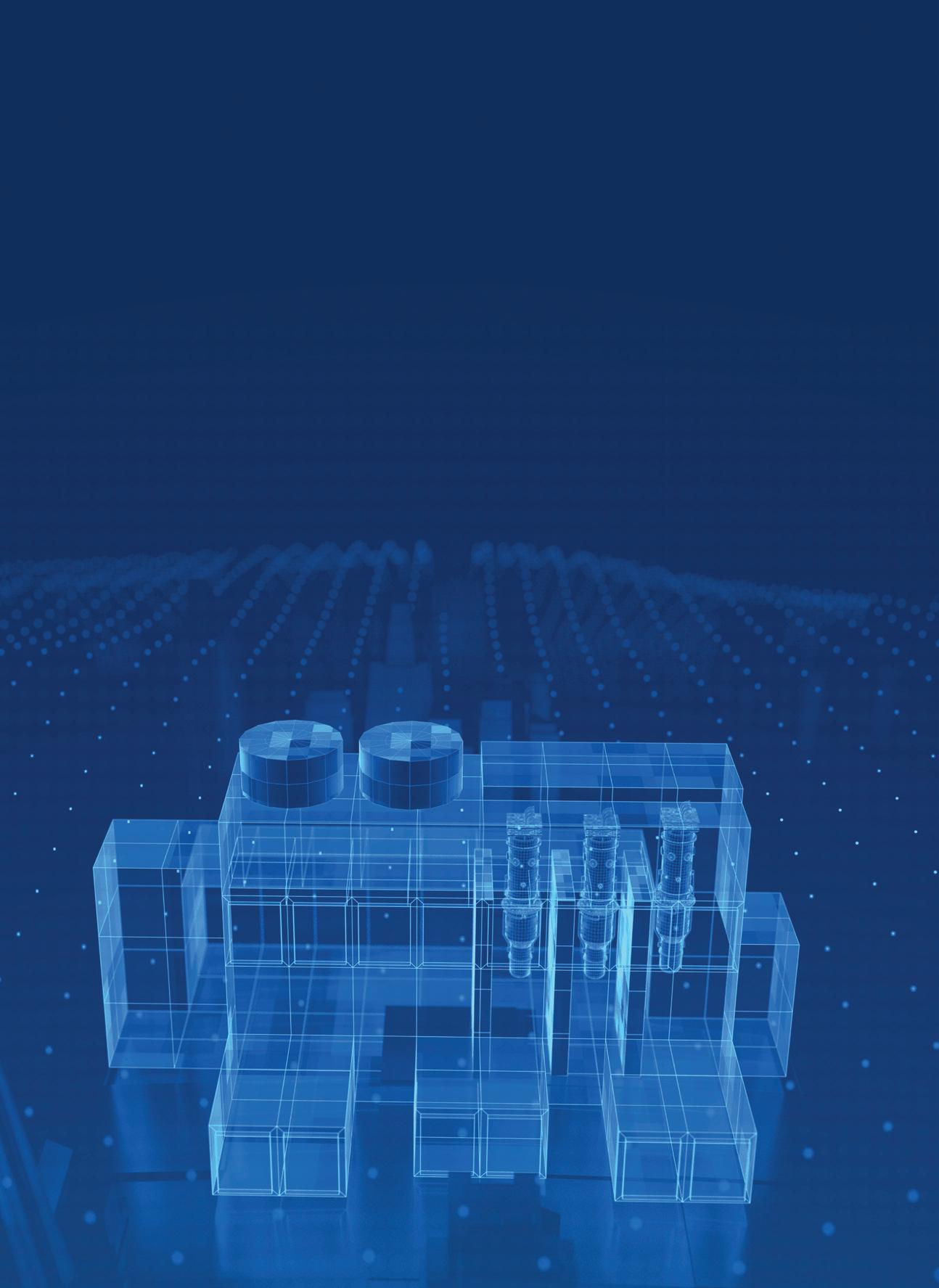
IAEA Director General Rafael Mariano Grossi reiterated the importance of this IAEA initiative at the NHSI plenary in June 2023. “The harmonization of approaches facilitates the international trade of SMRs and components as developers design and manufacture reactors that comply with a more uniform set of global standards, rather than having to deal with multiple, sometimes conflicting, sets of requirements in different countries,” he said.
He added that the IAEA, due to decades of experience as the hub for safety and regulatory issues, was ideally placed to foster international cooperation in terms of national regulatory frameworks. “More harmonized regulatory approaches will allow greater international collaboration and enable countries to implement high standards of safety and security,” he said. The NHSI, which launched in June 2022, comprises two separate but complementary tracks: the Regulatory Track and the Industry Track. The SMR Regulators’ Forum is supporting the Regulatory Track and is developing processes to leverage other regulators’ licensing reviews and to conduct joint reviews.
The NHSI Regulatory Track also includes a working group on developing a framework for information sharing among regulators, and another focused on a multinational pre-licensing review. Under the multinational pre-licensing review effort, regulators would work together to identify potential challenges in a new reactor design before it is submitted for a national licensing review.
Informing and involving the public are cornerstones of nuclear power development. Public information on and stakeholders’
engagement in the safety of innovative reactor designs, such as SMRs, will be essential to their successful deployment. “Since these reactors may be located much closer to the population, it is a priority for regulators to engage with and listen to the public, especially in an embarking country, where this will be their first reactor,” Smith said. “Regulators are meeting this challenge through building a culture of openness, professionalism and robust safety, and emphasizing their independence, transparency and role as a credible source of timely, reliable and easily accessible information.”
The Nuclear Harmonization and Standardization Initiative, which launched in June 2022, is developing harmonized regulatory and common industrial approaches.
IAEA Bulletin, September 2023 | 25 Nuclear Innovations for Net Zero
—
Verifying spent nuclear fuel in deep geological repositories
By Eva Morela Lam Redondo
As the world looks to alternatives to fossil fuels to combat climate change, several countries are developing nuclear power programmes to provide a sustainable source of low carbon energy. Countries operating nuclear reactors are responsible for providing geological disposal capacity for high-level radioactive waste. The internationally wellestablished approach for such disposal is a mined deep geological repository (DGR). Canada, Finland, France, Sweden and Switzerland have the most advanced DGR programmes.
Examples of the new facilities under development include the Encapsulation Plant (EP) and DGR in Finland — the former is where spent fuel will be safely sealed in disposal canisters, the latter is where the canisters will then be permanently and safely stored. Both are required to comply with Finland’s international legal obligations to allow for the IAEA’s verification of the peaceful use of nuclear material.
The IAEA fulfils its nuclear verification mission by implementing a series of technical measures — safeguards — to oversee nuclear facilities, materials and activities. These measures allow the IAEA to independently verify that States are fulfilling their legal responsibility to use nuclear material only for peaceful purposes. States accept these measures by entering into safeguards agreements with the IAEA. Consequently, by performing safeguards, the IAEA can provide the world with credible assurances that States are meeting their nuclear non-proliferation commitments.
“Finland’s collaboration with the IAEA exemplifies a strong commitment to fulfil our international non-proliferation obligations through effective safeguards,” said Marko Hämäläinen, Section Head of Nuclear Materials Safeguards at the Radiation and Nuclear Safety Authority (STUK) in Finland.
The EP and DGR facilities present challenges and opportunities for the application of safeguards, and innovative solutions are
being developed so that IAEA safeguards inspectors can verify the stored nuclear material. Accessing the DGR, which is almost 500 metres deep underground and is scheduled to operate for the next 100 years, is one of these challenges. When operational, the EP and DGR will be the first facilities of their kind in the world under a comprehensive safeguards agreement with the IAEA. IAEA inspectors are therefore required to devise new and sustainable safeguards approaches to verify difficult to access nuclear material now and into the distant future.
“As safeguards inspectors, we need to be able to verify the spent nuclear fuel before it is transferred to the EP and DGR facilities. We then implement safeguards measures to confirm that the spent fuel is not diverted or substituted, and that the facilities are not used for undeclared purposes,” said Courtney Ames, Nuclear Safeguards Inspector at the IAEA. “The EP and DGR facilities present a challenge for IAEA safeguards inspectors in terms of maintaining the continuity of knowledge during and after the transfer of the spent fuel, especially with limited physical access to the geological repository. By utilizing novel techniques, teamwork and careful analysis, our safeguards objectives can be achieved.”
Collaboration between the IAEA, the European Commission and the STUK is essential for developing safeguards measures and techniques, including through the development and testing of spent nuclear fuel verification technologies prior to disposal of the spent fuel.
In 2012, the IAEA initiated the Encapsulation Plant and Geological Repository (EPGR) project to specifically address the safeguards implementation challenges posed by the new types of facilities. Working closely with counterparts, the project has implemented a comprehensive approach that incorporates safeguards by design (SBD) principles, which can minimize operational impacts at the DGR. SBD involves integrating safeguards considerations early in the planning and
“As safeguards inspectors, we need to be able to verify the spent nuclear fuel before it is transferred to the EP and DGR facilities. We then implement safeguards measures to confirm that the spent fuel is not diverted or substituted, and that the facilities are not used for undeclared purposes.”
26 | IAEA Bulletin, September 2023 Nuclear Innovations for Net Zero
Courtney Ames, Nuclear Safeguards Inspector, IAEA
design phases of a facility, with continued integration throughout its construction, operation and decommissioning. In the case of Finland, SBD enables both IAEA and Euratom safeguards inspectors, and the national authority (STUK), to efficiently fulfil their duties without disrupting the operations of the EP and DGR facilities.
“Through the EPGR project, we have implemented safeguards by design. This proactive approach reduces the need for retrofits and saves valuable resources for the operator, STUK, the IAEA and the European Commission,” Hämäläinen said.
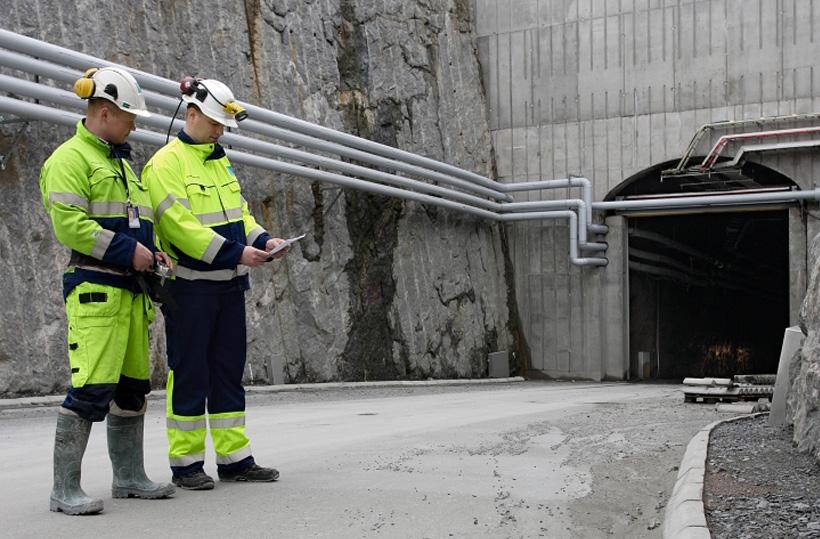
Other recently developed concepts and measures, including remote monitoring systems, are being installed. By using remote monitoring systems to observe the location of the nuclear material, the IAEA can reduce in-field inspections and, in turn, lower the carbon emissions arising from travel to and from facilities. Techniques like seismic monitoring and laser-based containment
systems could also play a role in reducing inspections. Seismic monitoring can detect any undeclared penetrations of the DGR’s surrounding rock, whereas laser-based containment systems analyse the welding profile of the container’s lid to produce a unique natural ‘signature’ which, if altered, would indicate that a canister has been opened.
By 2025, the EP and DGR facilities in Finland will be fully operational for the emplacement of spent nuclear fuel. Together, through collaboration and innovation, the IAEA, the European Commission and the STUK are implementing effective and efficient safeguards that achieve the IAEA’s verification objectives, while ensuring minimal impact to the operation of the facilities. By incorporating SBD, the EP and DGR facilities will provide a solution for handling and disposing of spent nuclear fuel, supporting the transition to low carbon nuclear power, and facilitating the IAEA’s verification of nuclear material and technology.
Entrance to ONKALO, Finland’s deep geological repository for spent nuclear fuel.
IAEA Bulletin, September 2023 | 27 Nuclear Innovations for Net Zero
(Photo: Posiva Oy)
Fashioning perceptions of nuclear energy
By Irena Chatzis
Public perceptions about nuclear energy have been changing amid concerns about climate change and energy security, as well as energy justice and sustainable development. At the same time, nuclear power advocates are finding innovative and engaging ways to point out the benefits of this clean energy source. One of them is the nuclear energy influencer and model Isabelle Boemeke.
Known as Isodope on social media, Boemeke says she believes that nuclear power is vital for a future in which humankind not only survives, but also thrives. In this interview, Boemeke explains how she uses her online persona to inform younger generations about nuclear power.
How did you become interested in nuclear energy?
In 2015, a scientist I follow on social media tweeted about molten salt thorium reactors. I did some research, but did not find information that somebody like me, who does not have a technical background, could understand. That sparked my curiosity about nuclear power, and I asked people what they thought about it. The responses boiled down to this: It is actually good. We definitely need it to solve climate change, but people absolutely hate it.
With the 2019 fires in Australia, the Amazon and California, I realized that we were not moving fast enough in fighting climate change and started looking into solutions; I came across nuclear power again. It struck me that everything that people thought they knew about nuclear power was wrong. It was wrong because they mostly got their information from cultural references, movies and cartoons, such as The Simpsons. I tried to figure out how to inform people that nuclear power is the world’s second largest source of clean energy and that countries that have decarbonized their electricity have mostly done so through hydropower or nuclear power.
Is that how Isodope was born?
We live in a world shaped by social media and studded with social media influencers. I realized that the best way to get the message across about nuclear was to create content that appealed and spoke to people on social media. I knew my content had to be very different, as I didn’t want to create just another video. I came up with a character who dresses in a futuristic way, uses accessible language and colourful visuals.
I call her ‘Isodope’, which is a pun on the chemistry term ‘isotope’.
Who is your primary audience?
My focus is on millennials (people born in the 1980s and 90s) and younger people. The livelihoods of young people are at stake. We, and our children, are going to be the ones living with the worst effects of climate change.
How do you reach out to broader audiences, beyond the pro-nuclear community?
Social media is a very useful tool in that regard. Not only can you create content, which is what I do, but you can also engage with people through that content. You can respond to those who have questions and who are curious.
Every occasion is an opportunity to bring up the subject of nuclear power. When I go to the doctor, for example, and someone asks me about my job, I say that I work with nuclear energy, and it always ends up being an interesting conversation. Engaging the communities around nuclear power plants is also very important. Those people are the best advocates because their communities are benefiting so much from that one facility.
Another topic that should be fully explained is radioactive waste, because that is one of the biggest issues that people bring up. As anyone who has seen nuclear waste can tell you, it is the most boring thing on planet Earth: concrete casks, just sitting there. It would really help to keep showing what nuclear waste looks like and sending the message that it is safely managed and, honestly, more boring than people think.
28 | IAEA Bulletin, September 2023 Nuclear Innovations for Net Zero Ι Q&A
What has been your biggest accomplishment in your career as a nuclear energy influencer?
Saving the Diablo Canyon nuclear power plant in California from closure in 2022 is at the top for many reasons. When I started working as a nuclear energy influencer, I researched the plants that were scheduled for premature shutdown in the United States of America. There were five of them at the time, and Diablo Canyon stood out, not only because it was a beautiful facility and could keep operating for another 20 years, but also because it was the symbol of the anti nuclear movement in the United States. When Diablo Canyon was built in the late 1960s and 70s, there were a lot of protests, including one rally attended by about 30 000 people.
Saving that plant meant sending a message to the public and to politicians that the tide has changed; people are now on board with nuclear power. I thought it was a worthwhile cause, and I collaborated with a lot of different organizations in the United States. We organized the biggest pro-nuclear rally
in the country. I also created a non profit organization called Save Clean Energy and sent a letter to the Governor of California that was signed by 80 leading energy and climate experts and entrepreneurs, urging him to keep Diablo Canyon open. As a result, the plant will remain open for at least five years past its originally planned closure in 2025.
What are your latest projects and plans for Isodope?
I’m currently writing a book, Rad Future, about nuclear power; it is written in an Isodope-like, easy to understand style. On the non profit side, I’m very focused on a coal to nuclear transition, as I think that is probably our best bet to accelerate the deployment of nuclear power, at least in the United States.
Finally, I think that we can reach a whole different audience through the fashion industry. I’ve done fashion editorials and interviews about nuclear power, and I’ll keep doing that. There are a lot of interesting collaborations in the future that can happen there.


“Every occasion is an opportunity to bring up the subject of nuclear power.”
IAEA Bulletin, September 2023 | 29 Nuclear Innovations for Net Zero Ι Q&A
— Isabelle Boemeke, Nuclear Energy Influencer and Model, known as Isodope
40 years of OSART Improving nuclear power plant safety worldwide
nuclear fuel is loaded into the nuclear reactor. To complement such missions, Corporate OSART missions are also conducted to review the centralized functions of operational safety aspects of nuclear power plants within the fleet, such as corporate management; safety performance monitoring; and oversight, procurement or human resources.
The OSART programme today
The IAEA is celebrating the 40th anniversary of the Operational Safety Review Team (OSART), one of the most important safety peer review services offered by the IAEA to its Member States. The OSART programme aims to help countries strengthen the safety of their nuclear power plants during commissioning and operation by comparing actual practices with the IAEA safety standards. Since the first mission to Kori Nuclear Power Plant in the Republic of Korea in August 1983, the IAEA has carried out 218 OSART missions to 37 countries, providing objective and independent assessments of their operational safety performance.
“Through these missions, thousands of experts have supported the continuous safety improvement of nuclear power plants operating across the globe,” said IAEA Director General Rafael Mariano Grossi.

OSART missions are designed to assist nuclear operators in strengthening the operational
safety of their plants by identifying areas that should be improved and recommending ways to do so.
During an OSART mission, experts from Member States and the IAEA assess safety performance at the nuclear facility against the IAEA safety standards, the internationally accepted standards for nuclear safety, and provide specific recommendations and suggestions for safety improvements. During the mission, the application of these standards in a wide range of areas, including plant management, personnel training and qualification, operations and safety culture, is assessed.
OSART missions for operational nuclear power plants can be conducted at any time after a plant begins commercial operation. A follow-up visit is usually held about 18 months after the main mission. Pre-OSART missions are conducted during the commissioning phase of a nuclear power plant, normally a few months before the first
Recent analysis showed that operators of nuclear facilities act promptly on the findings of OSART missions and that over 95 per cent of the findings are resolved or have achieved satisfactory progress by the time follow-up missions are conducted.
In recent years, the programme has placed a greater emphasis on areas such as accident management and the interaction between humans, technology and organizations. The programme also emphasizes safety culture, which refers to how an organization’s culture prioritizes and values safety. The OSART programme strives to instil a safety culture that encourages the host organizations to identify and resolve safety issues themselves at an early stage.
Promoting information sharing, transparency and trust
To date, OSART missions have identified 1350 good practices, which are also available to the public on the IAEA’s website. Operating organizations frequently review these good practices and implement those that are applicable.
30 | IAEA Bulletin, September 2023 IAEA Updates Ι News
Members of the Operational Safety Review Team at the 200th OSART review in Almaraz, Spain, in 2018. (Photo: M. Klingenboeck/IAEA)
To ensure transparency, the OSART Guidelines are available to the public, as are the IAEA safety standards on which the service is based.
“The IAEA’s peer review missions are more crucial now than ever, as they lay the foundation for the significant expansion of nuclear energy required to meet global
climate goals,” Director General Grossi said.
— By Nayana Jayarajan
IAEA showcases SDG support at United Nations High-Level Political Forum
The IAEA participated in the 2023 United Nations High-Level Political Forum on Sustainable Development at UN Headquarters in New York from 10–19 July, emphasizing the critical contributions made by nuclear science and technology towards the achievement of the Sustainable Development Goals (SDGs).
“We face an uncertain future at a time of converging water, energy and climate crises. We must work together to find viable solutions to address countries’ priorities, increase their resilience and reduce global inequalities,” IAEA Deputy Director General and Head of the Department of Technical Cooperation Hua Liu said.
The IAEA is focused on helping countries to reach their SDG targets and the 2023 High-Level Political Forum featured reviews of five SDGs, including clean water and sanitation (SDG 6) and affordable and clean energy (SDG 7). The IAEA promotes the use of nuclear science and technology to create clean, reliable and affordable energy and the use of nuclear techniques, such as isotope hydrology, to increase water resources management.
This year marks the midpoint for the implementation of the 17 SDGs, interconnected goals intended to address the global challenges the world is facing and to be achieved by 2030. The IAEA hosted an exhibition and organized a side event that focused on improving access to clean water and
energy through South–South and triangular cooperation.
The Director of the UN Office for South–South Cooperation, Dima Al-Khatib, underscored the importance of this approach.
“South–South and triangular cooperation is proving itself as an innovative way of enhancing capacity and alleviating the challenges countries of the South are grappling with — be they water management, energy, digitalization or poverty. South–South cooperation is an invaluable collaborative mechanism with impact at all levels,” she said.
Ambassador Xolisa Mabhongo of South Africa emphasized the importance of South–South cooperation in energy planning owing to the high level of technical competency required. With the support of the IAEA, South Africa has hosted sessions of the Nuclear Energy Management School to help experts from African countries to build their knowledge and skills on the nuclear energy life cycle.
“By coming together with trusted partners, we can tackle the climate and energy crises by broadening the reach of proven solutions made possible by science and technology,” said Vivian Okeke, Representative of the IAEA Director General to the United Nations and Director of the IAEA Liaison Office in New York.
Although access to clean energy has improved globally, 675 million people still lack access to
electricity, and 2.3 billion people do not have access to safe fuel sources for cooking, according to the Sustainable Development Goals Report 2023: Special Edition. The IAEA assists countries in their attainment of the SDGs through its technical cooperation programme.
Intervening at a UN Educational, Scientific and Cultural Organization side event on science-based water assessment, IAEA Deputy Director General Liu highlighted that “using a science-based assessment, scientists can provide policymakers with the information that is necessary to manage, protect and preserve water resources; making clean water available to everyone would be groundbreaking for sustainable development.”
Globally, 2.2 billion people still have no access to safe water and 3.5 billion lack sanitation services. Climate change and conflict have worsened water scarcity issues in some regions. The Permanent Representative of Tajikistan to the UN, Ambassador Jonibek Hikmat, described how Tajikistan is currently experiencing water security challenges that are being exacerbated by climate change. The IAEA has provided bespoke technical cooperation support to Tajikistan to assess groundwater resources in the Aral Sea basin, and a national project on glaciers has just begun.
—By Melissa Evans
IAEA Updates Ι News IAEA Bulletin, September 2023 | 31


download here DOWNLOAD Climate Change and Nuclear Power 2022 and other IAEA publications on innovative solutions for net zero: Technology Roadmap for Small Modular Reactor Deployment Nuclear–Renewable Hybrid Energy Systems Benefits and Challenges of Small Modular Fast Reactors Climate Change and Nuclear Power 2022 Securing Clean Energy for Climate Resilience To order a book, write to: sales.publications@iaea.org IAEA Publications free online www.iaea.org/books www.iaea.org/bulletin/64-3 IAEA Updates Ι Publications 32 | IAEA Bulletin, September 2023
for net zero energy systems


Partner With Us ATOMS 4
The IAEA welcomes Member States, industry, financial institutions and other stakeholders to partner with us and to contribute their expertise, modelling tools, industrial knowledge, advocacy and financial resources.
www.iaea.org/Atoms4NetZer
#Atoms4NetZero
o








For more information on the IAEA and its work, visit www.iaea.org or follow us on Read the IAEA Bulletin online at www.iaea.org/bulletin 23-03627 ISSN 0020-6067 26–27 SEPTEMBER 2023 atoms.iaea.org/SciFoNetZero WATCH AND LEARN MORE












 — Rafael Mariano
— Rafael Mariano













 By Joanne Liou
By Joanne Liou






 By Emma Midgley
By Emma Midgley



 By Wolfgang Picot
By Wolfgang Picot













